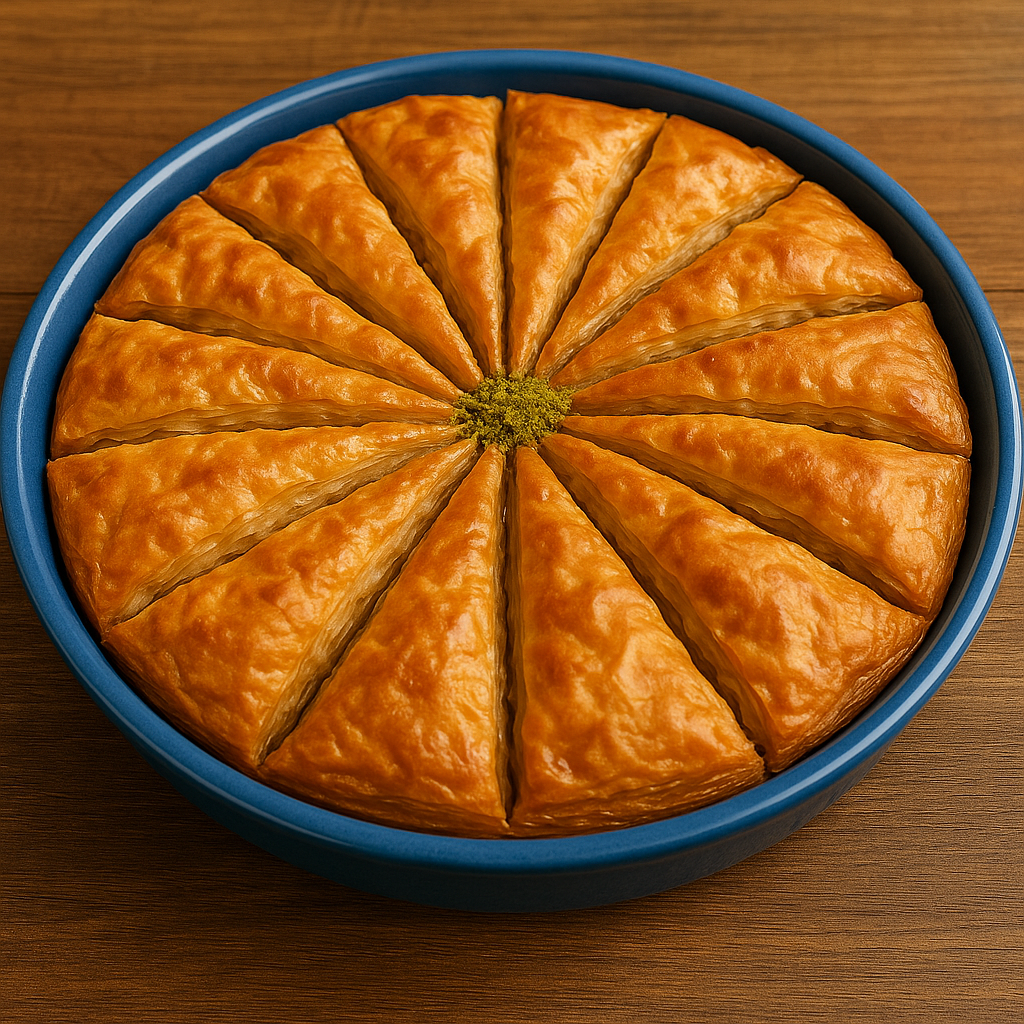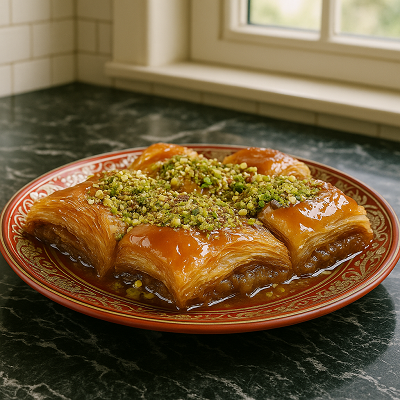
layered nut pastry with syrup
Dish Outline
Baklava is one of the foremost famous conventional Middle Eastern and Mediterranean pastries. It consists of layers of sensitive phyllo mixture prepared to brilliant flawlessness at that point and doused in fragrant sugar glaze (known as sharbat) imbued using orange blossom or rose water. Baklava is a lavish treat frequently served on extraordinary events and occasions.
Thank you for reading this post, don't forget to subscribe!Baklava is the idealized concordance of crunch, sweetness, delicacy, and lavishness, reflecting centuries of the authority of baked goods and social legacy. Bought from fine cake shops, baklava never falls flat to awe visitors and enchant refined palates using its lovely introduction plus profound flavors.
Wellbeing Benefits
- kernels like walnuts, almonds, and pistachios are rich in protein and solid fats.
- Sugar or nectar gives speedy vitality.
- Phyllo cake makes the dessert light and flaky compared to heavier desserts.
- Orange bloom or rose water includes calming stomach-related benefits.
- kernels, moreover, give cancer prevention agents, vitamins, and fiber.
Fixings
Fundamental Fixings:
- 500g phyllo cake sheets
- 300g chopped kernels (walnuts, almonds, pistachios, or a mix)
- 2 tbsp powdered sugar
- 1 tsp ground cinnamon (discretionary)
- 200g liquefied butter
- For the glaze:
- 1 glass sugar
- ½ glass water
- 1 tsp lemon juice
- 1 tbsp orange bloom or rose water
Arrangement Strategy
1. Plan the Filling:
Blend the chopped kernels using powdered sugar and cinnamon. Set aside.
Include the crunch Filling:
Spread the seed blend equally over the layered phyllo.
Best using Remaining Phyllo:
Layer the remaining sheets over the kernels, brushing each one using butter.
Cut and Prepare:
Cut the baklava into jewels, squares, or triangles.
Heat in a preheated broiler at 180°C (356°F) for 35–40 minutes until brilliant and fresh.
Plan the glaze:
In a pot, combine sugar, water, and lemon juice. Stew until marginally thickened.
Include the orange bloom or rose water after expelling from warm.
Accommodating Tips
- Keep unused phyllo sheets secured using a soggy towel to anticipate drying out.
- For a more conventional taste, utilize clarified butter or ghee rather than customary butter.
- Toast the kernels somewhat. Recently, I’ve been chopping to improve their flavor.
- Let the baklava rest before serving so the glaze completely assimilates and the surface moves forward.
As often as possible Inquired Questions
Can I utilize it as if it were one sort of crunch?
Yes, but a blend includes profundity in both flavor and surface.
Ought the glaze be hot or cold?
Cold glaze over hot baklava is best to keep the layers firm.
Is baklava diet-friendly?
Liberal, but little parcels can fit into an adjusted slim down. Decrease the sugar and butter for a lighter version.
Can I freeze baklava?
Yes, you can solidify it recently or after heating. Warm gently, sometimes recently served, for the best surface.
From Heritage to Hospitality: The Enduring Magic of Baklava
- Baklava is more than just a dessert – a timeless tradition passed down through generations.
- Every crisp layer and syrupy bite of baklava tells a story of heritage and hospitality.
- Whether hosting guests or celebrating a special occasion, baklava is always the perfect sweet touch.
- Homemade or bakery-bought, baklava never fails to impress using its rich flavors and elegant texture.
- Baklava is a shared love across cultures and continents from Istanbul to Beirut.
- The beauty of baklava lies in its balance – light yet indulgent, sweet yet delicate.
- This golden pastry is the crown jewel of Middle Eastern sweets, and for good reason.
- Baklava pairs perfectly using a warm cup of tea or strong black coffee.
- No celebration table is truly complete without a tray of beautifully cut baklava.
- Mastering baklava at home is a rewarding experience – both in the making and the tasting.



